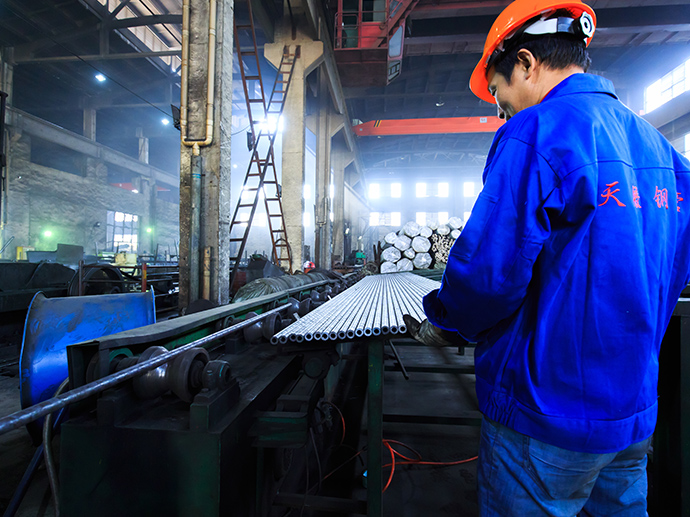
Galvanized steel is widely used in industries ranging from construction to automotive manufacturing due to its exceptional corrosion resistance. However, cutting this material requires precision and care to maintain its integrity and avoid compromising its protective zinc coating. At Tenjan, a trusted name in steel manufacturing and processing, we specialize in delivering tailored solutions for galvanized steel applications. Here’s how to cut galvanized steel safely and effectively—backed by our technical expertise.
Why Cutting Galvanized Steel Demands Precision
Galvanized steel is coated with a layer of zinc to prevent rust, but this coating can become brittle or uneven if damaged during cutting. Improper techniques may weaken the material or shorten its lifespan. At Tenjan, we emphasize preserving the zinc layer while achieving clean, accurate cuts tailored to your project needs.
Methods for Cutting Galvanized Steel
1. Manual Cutting Tools
Tools: Angle grinders, hacksaws, or reciprocating saws with fine-tooth blades.
Steps:
Mark the cutting line clearly using a scribe or marker.
Use a low-speed setting on angle grinders to reduce heat buildup, which can warp the steel.
Avoid pressing too hard to prevent zinc flaking.
Best For: Small-scale projects or thin-gauge galvanized sheets.

2. Mechanical Cutting
Tools: Shears, bench-top cut-off machines, or CNC plasma cutters.
Steps:
Secure the steel firmly to prevent vibrations.
Adjust blade clearance to match the steel thickness (typically 10–20% of material thickness).
Use lubrication sparingly if needed, avoiding oils that could react with the zinc.
Best For: Medium to large-scale production with consistent tolerances.
3. Laser Cutting
Tools: Fiber or CO2 lasers (ideal for Tenjan’s high-precision workflows).
Steps:
Program the laser to cut with minimal heat-affected zones (HAZ), preserving the zinc coating.
Use nitrogen assist gas to blow away molten metal and enhance edge quality.
Best For: Intricate designs, thick gauges (up to 1 inch), and industries requiring micron-level accuracy.
4. Plasma Cutting
Tools: High-definition plasma cutters.
Steps:
Set the amperage to match the steel thickness (lower for thin gauges).
Maintain a slow travel speed to avoid melting the zinc layer.
Best For: Quick cuts on thick galvanized steel plates.
Key Tips for Safe and Effective Cutting
Safety First: Wear gloves, goggles, and a respirator to protect against zinc dust (toxic if inhaled).
Heat Management: Excessive heat can warp the steel or degrade the zinc coating—opt for low-speed, high-force methods.
Post-Cut Treatment: Smooth rough edges with a grinder or deburring tool to prevent corrosion at cut points.
Tenjan’s Approach to Galvanized Steel Cutting
At Tenjan, we combine advanced technology with decades of metallurgical expertise to deliver unmatched cutting solutions:
Customized Cutting Services: From laser precision to heavy-duty plasma cutting, we adapt methods to your specifications.
Zinc-Coating Preservation: Our processes minimize coating damage, ensuring your steel retains its anti-corrosion properties.
Scalability: Whether you need a single prototype or bulk orders, our production lines handle volumes efficiently.
At Tenjan, we don’t just cut steel—we engineer solutions. Whether you’re fabricating a custom part or optimizing a production line, our team is ready to help. Contact us today to discuss your galvanized steel cutting requirements and experience unmatched technical support.
Home Tubes and Pipes Capabilities Case Studies Blogs About Get a Quote
Seamless Steel Tubes Special-Shaped Seamless Steel Tubes Cold Drawn Steel Profiles & Bars Cold-Drawn Welded Tubes Rebar Couplers
Oil & Petrochemical Industry Automotive & Motorcycle Components Mechanical Engineering Components Mining & Construction Support Structures High-Pressure Boiler System Construction Machinery Geological Drilling Agricultural Machinery Parts Industrial Fluid Transfer Systems
© 2024 Changzhou Tenjan Steel Tube Co., Ltd All rights reserved. Privacy StatementTerms-ConditionsSitemap